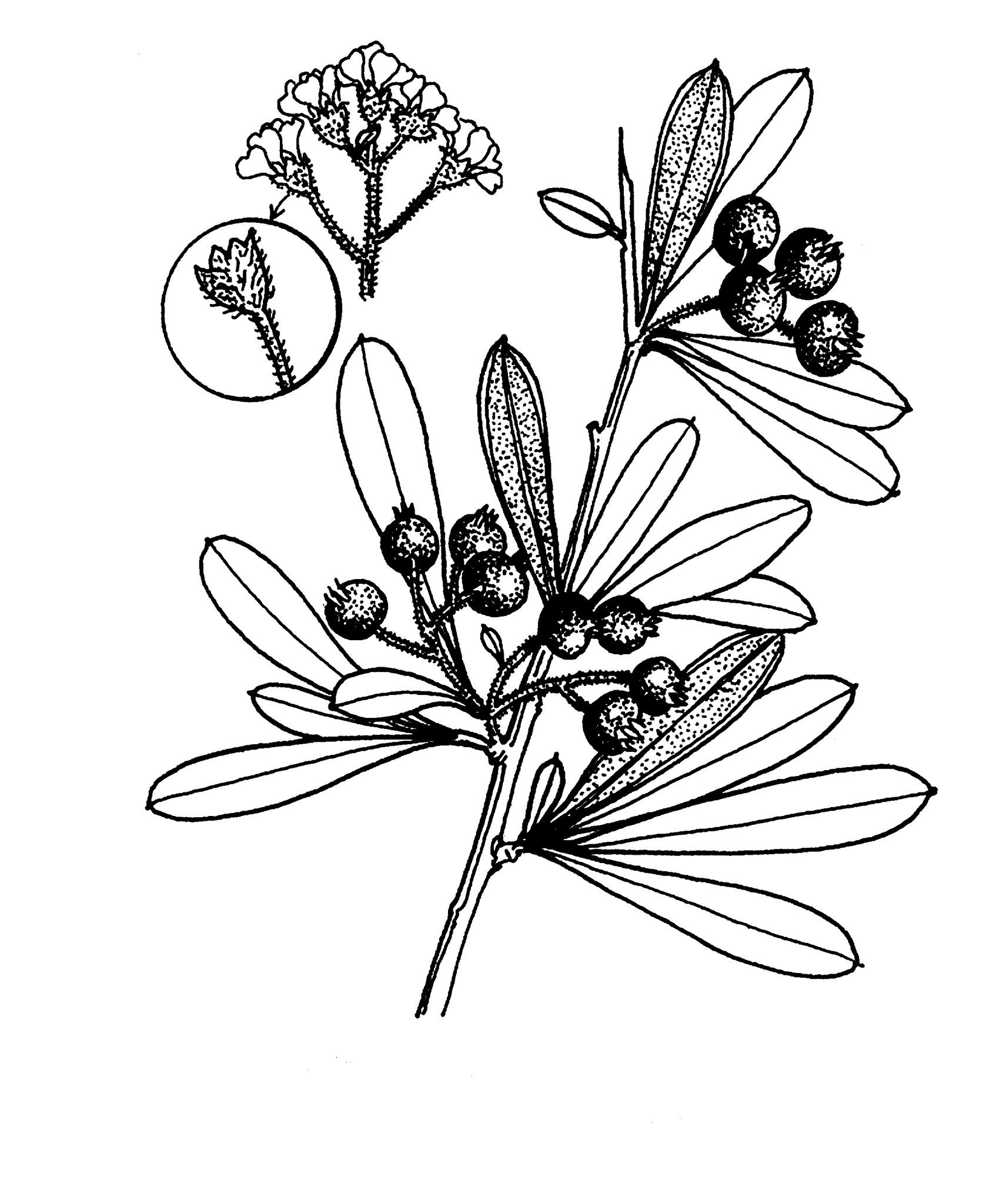
Greek pyr — fire, akanthos— thorn, referring to the fire-coloured fruits and thorny branches
Evergreen shrubs, generally with thorny branches. Leaves alternate, margins entire or with rounded or saw-edged teeth, stalks short; stipules extremely small, soon shed. Flowers in compound flat-topped clusters. Calyx of 5 short teeth. Petals white, roundish, the tip often notched. Stamens about 20. Ovary inferior. Carpels 5, free, fused for part of their length to the calyx tube. Styles 5. Fruit mostly pea-sized and slightly compressed, red, orange or yellow and with the calyx persistent; seeds 5.
Grown as border plants for the dense foliage and ornamental berries; also sometimes used as thorny hedges. Plants are susceptible to various pathogens, most notably Fireblight. For this reason, and because they show a tendency to become environmental weeds, they are not encouraged for ornamental planting. The distinctions between some species in Australia are not always clear and hybrids may exist.
7 species from China, the Himalaya and SE Europe.
Seed and semi-hardwood cuttings, sometimes by layers or grafts.
Ovary inferior; branches with thorns; fruits slightly flattened, orange, red or yellow.
Harden & Rodd (1990). Cultivars: Egolf & Andrick (1995).
Source: (2002). Rosaceae. In: . Horticultural Flora of South-eastern Australia. Volume 3. Flowering plants. Dicotyledons. Part 2. The identification of garden and cultivated plants. University of New South Wales Press.
